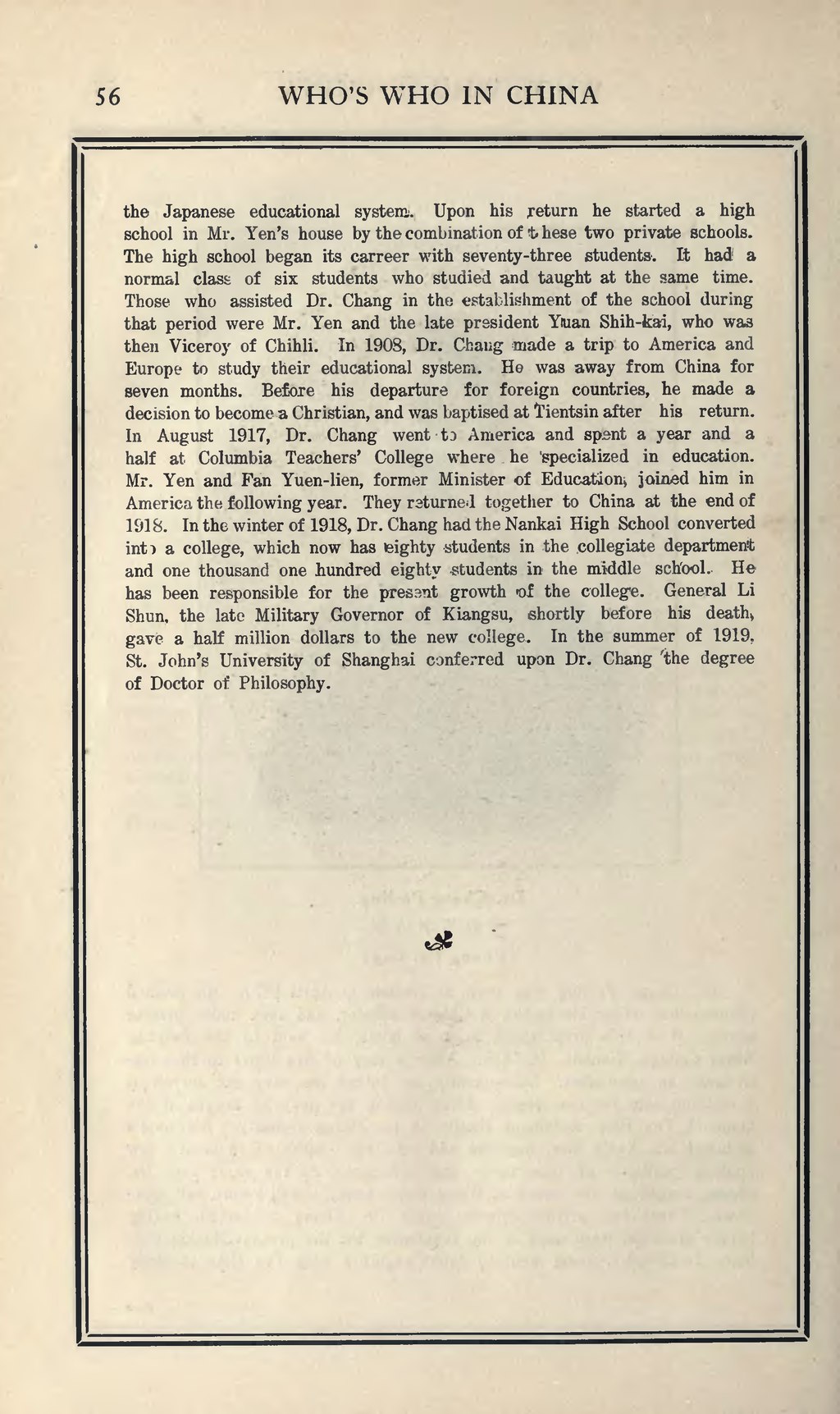the Japanese educational system. Upon his return he started a high school in Mr. Yen's house by the combination of these two private schools. The high school began its carreer with seventy-three students. It had a normal class of six students who studied and taught at the same time. Those who assisted Dr. Chang in the establishment of the school during that period were Mr. Yen and the late president Yuan Shih-kai, who was then Viceroy of Chihli. In 1908, Dr. Chang made a trip to America and Europe to study their educational system. Ho was away from China for seven months. Before his departure for foreign countries, he made a decision to become a Christian, and was baptised at Tientsin after his return. In August 1917, Dr. Chang went to America and spent a year and a half at Columbia Teachers' College where he specialized in education. Mr. Yen and Fan Yuen-lien, former Minister of Education joined him in America the following year. They returned together to China at the end of 1918. In the winter of 1918, Dr. Chang had the Nankai High School converted into a college, which now has eighty students in the collegiate department and one thousand one hundred eighty students in the middle school. He has been responsible for the present growth of the college. General Li Shun, the late Military Governor of Kiangsu, shortly before his deaths gave a half million dollars to the new college. In the summer of 1919, St. John's University of Shanghai conferred upon Dr. Chang the degree of Doctor of Philosophy.

